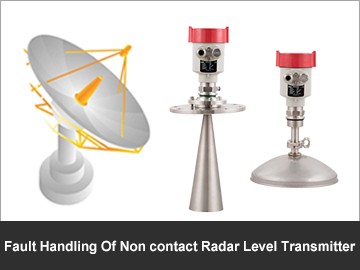Fault Handling Of Non contact Radar Level Transmitter
There are two ways to solve fault handling of non contact radar level transmitter. In fact, most of these common faults are caused by abnormal measurement results and measurement environment. Therefore, we only need to check the measurement data and check the external environment, so that we can timely troubleshoot the transmitter fault and work normally.
The most common fault of non contact radar level transmitter is the error of measurement data. As we all know, every transmitter has an accuracy value, and its technology and price will vary with different accuracy values. However, the measurement error is within the reasonable tolerance range, otherwise, the transmitter accuracy decreases, there is an abnormal. On the other hand, the non contact radar level transmitter sometimes shows the same trend of liquid level and measured value, but the value is not the same. At this point, the best solution is: before the calibration, the most real data must be measured on the spot, and the traditional rope measurement method is used to measure the real distance above, so as to obtain accurate measurement results, and then the abnormal data can be repaired.
When the non contact radar level transmitter is working, its measurement value is constant. If the measurement value is distorted when measuring the liquid level of storage tank, "fixed component echo suppression" must be carried out at this time. Interference echoes can be intelligently filtered by software, and echo suppression can be achieved by registering interference echoes.
No matter what faults occur in non contact radar level transmitter, the transmitter stability can be restored in time by comparing the measured data with the measured environment.






